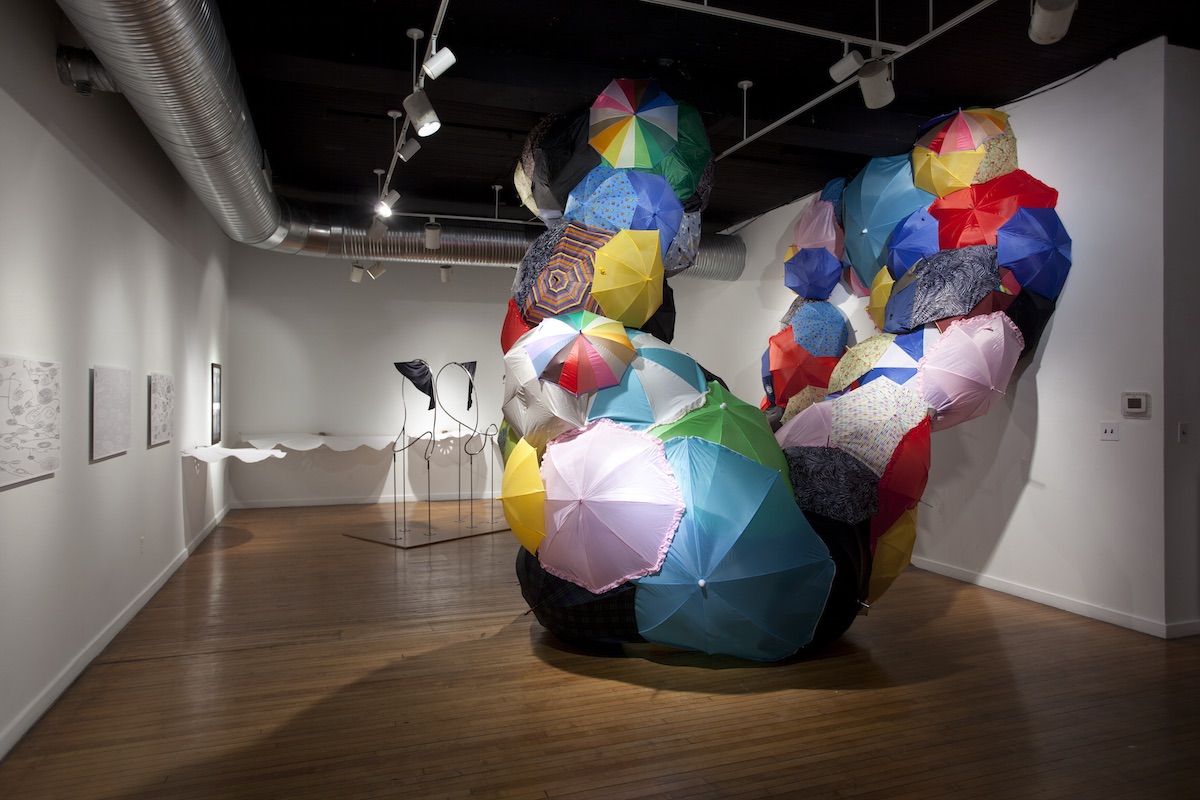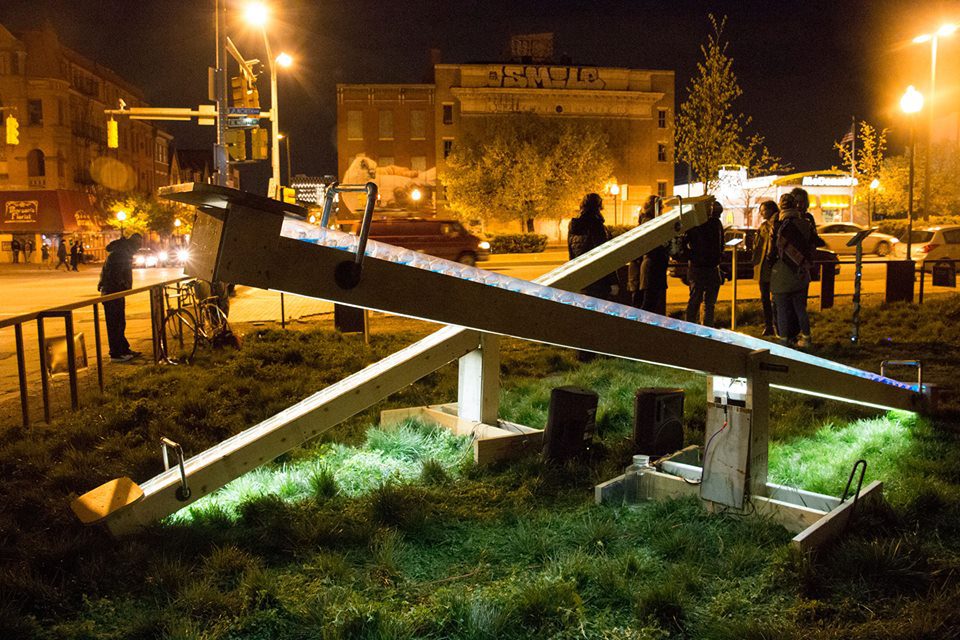Madeline Wheeler Reviews Nature in the Dark at Station North’s YNot Lot
When you want to experience nature, the last place you would expect to do so would be a vacant lot on a busy corner of North Avenue amongst the traffic in the center of Station North.
Located in the Ynot Lot, Nature in the Dark, curated by MICA MFA Curatorial Practice student Marnie Benney, aimed to explore the intersection of art and science through interactive, installation art inspired by the local natural landscape. Three artists—Laure Drogoul, Benjamin Andrew, and Rachel Guardiola—participated in a daylong environmental science residency at Washington College in Chestertown, MD, and created artworks in three disparate mediums to convey their newfound knowledge on the Chesapeake Bay.
This show is part of the Nature in the Dark Series, a project that invites artists “to create artworks inspired by ecological habitat surveys,” encouraging artists to creatively reimagine scientific data. Before traveling to Maryland, Nature in the Dark hosted previous events in Melbourne, Australia, focusing on biodiversity research conducted by the Victorian National Park Association.
Baltimore’s Nature in the Dark exhibit consisted of two light-up seesaw kinetic sculptures, a water tasting station, an immersive digital comic installation, and sixteen-millimeter and digital video work. A space generally reserved for summer film screenings, the Ynot Lot was a unique choice of venue. Curator Marnie Benney explained that her choice came from her interest in keeping the artwork accessible. “With [the exhibit] outside in the heart of Baltimore, we could bring art to people who don’t normally go out of their way to go to a gallery show and to a public who might not know what’s going on in the Chesapeake Bay even in its proximity.”
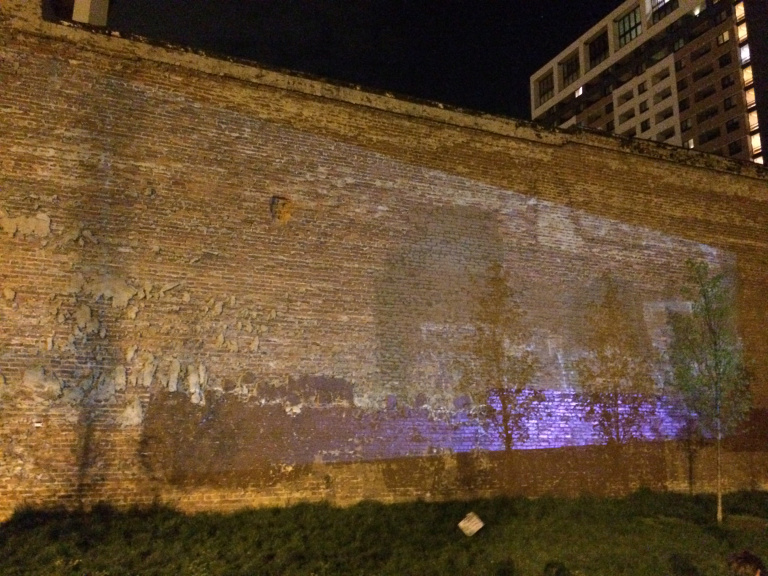
Although it was refreshing to see the space used for an art installation, the Ynot Lot still appeared somewhat barren, and Rachel Guardiola’s film—projected on an exposed brick wall—was hard to decipher. The roughly three minute sixteen millimeter and digital video piece, Voyage Around a Room consisted of footage of waves interspersed with shots of an arid, desert landscape in shades of bright purple. The information card accompanying Guardiola’s film described how the piece explored the formation of the Chesapeake Bay through a comet collision, yet the projection was so faint that it rendered the work nearly invisible.
Artist Laure Drogoul’s interactive Teetering X Tottering (on the brink) seesaw-like sculptures were, by far, the highlight of the exhibit. With their neon lights and playful nature, the twin wooden structures quickly drew the crowd’s attention. Outfitted with motion sensors, the structures played recordings of fish noises or emitted sounds of water running through the interior plastic bottles depending on which side was weighed down.

In regards to the inspiration behind her work, Drogoul stated, “The seesaw allows someone to hear the sounds and move in a way that they might actually move in water—balancing their body. I was interested in how the participant embodies these concepts with their body rather than their minds.”
Drogoul’s Water Tasting Station, a table with various repurposed water containers and plastic cups cast off to the side of the exhibition space, was less successful, and was not clearly marked as an installation piece. After reading the accompanying project description Benney emailed after the exhibit, it became evident that participants were intended to sample the water in order to “share the resource that sustains life on a global scale.” The work, unfortunately, read not as artwork but as a haphazard refreshment table.
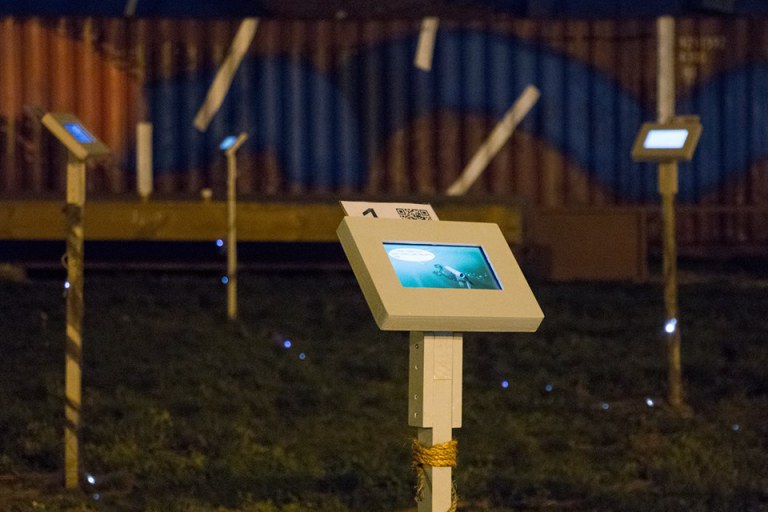
Benjamin Andrew’s immersive installation digital comic book, Zero Tide, was noteworthy in its craftsmanship, but somewhat awkward in its presentation. Installed on standing digital screens, the comic book was divided into five separate parts scattered throughout the Ynot Lot. Viewers walked from screen to screen, following a trail of lights that connected the screens containing an animated story narrated through speech bubble text. The fictional account told the futuristic tale of two technologically evolved turtles attempting to escape a diminishing habitat, focusing on modern day issues of pollution. The work was accompanied by atmospheric, electronic sound effects that were difficult to hear.
Zero Tide’s disjointed installation and space’s loud outdoor setting distracted from the work’s most compelling aspect—the fact that both the comic book’s music and physical installation were directly translated from GPS data on turtle behavior, mimicking the local turtles’ journey. The piece would perhaps translate better to an indoor space, and is much more comprehensive when presented online.
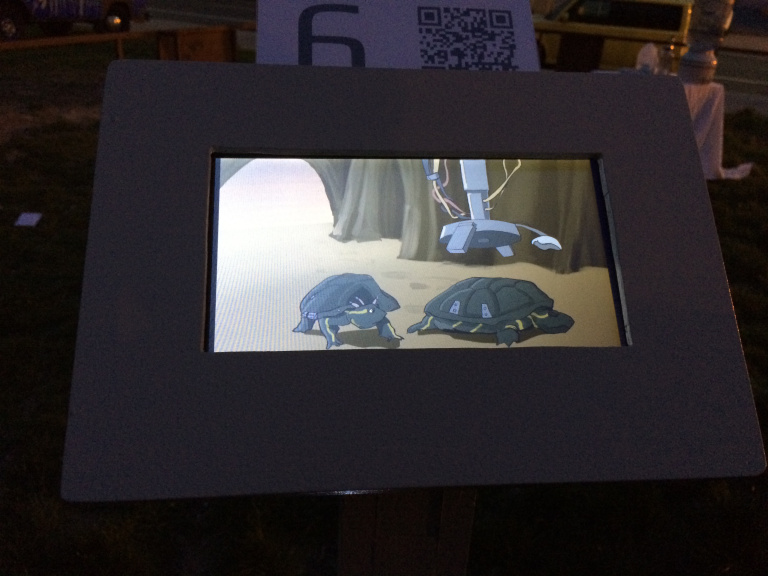
Nature in the Dark is undoubtedly ambitious in its scope, and curator Benney is eager to further explore its possibilities. She said, “I am very interested in bringing ‘nature’ to public urban spaces, engaging a community through contemporary art—and working collaboratively with artists to create these events. Ideally I would like to bring this model to port cities globally.” Benney is considering Hong Kong as a future site, but is still in the early planning stages.
While the goal of bringing the science and art worlds together is a valiant one, the Ynot Lot exhibit proved that Nature in the Dark still has some ways to go. The outdoor setting compromised some works, as sounds were drowned out by passing traffic and projections were dimmed by nearby street lights. Not to mention that the first sensation visitors experience when approaching the show was the overwhelmingly unnatural sound of the generator used to power the exhibit.
Nonetheless, with its hopeful future and passionate advocates, it is clear that this will not be the last we hear of Nature in the Dark. Although the exhibit is no longer up in Baltimore, it will be on display at Washington College’s SANDBOX gallery in downtown Chestertown, Maryland, from May 1st through the 29th. For more information, please visit http://www.natureinthedark.com/.
Photos courtesy of Benjamin Andrew and Madeline Wheeler
Nature in the Dark
Ynot Lot
Charles Street and North Avenue
Baltimore, MD 21201
Madeline Wheeler is a Baltimore-based writer from San Francisco enamored with ALLOVERSTREET and art documentaries. When she is not secluded to her apartment writing, she can be found dancing at The Crown or finding the latest pho place.

